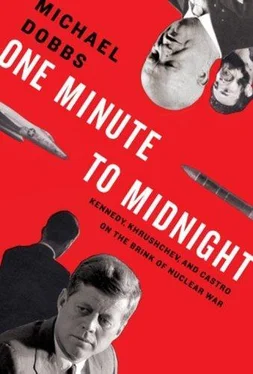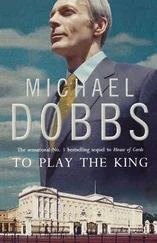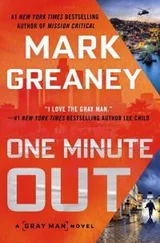As he emerged from the Oval Office, Kennedy saw a little man waiting by the door. It was Hans Kraus, a New York orthopedic surgeon hired as a consultant by the pro-exercise faction. The former trainer of the Austrian Olympic ski team had flown down from New York, not realizing that he had walked into a major international crisis. He had been seeing the president once or twice a week for the past year, but was becoming exasperated with the court atmosphere at the White House. He wanted everybody to know that he was “ready to quit if not appreciated.”
There were several reasons for Kraus’s frustration. He had been treating Kennedy free of charge. His attempts to interest the president in launching a national foundation on physical fitness had received only a tepid response. He had wracked up $2,782.54 in travel expenses, shuttling between New York, Washington, and the Kennedy compound in Palm Beach, for which he had not been reimbursed. Finally, he was dismayed by the feuding between the president’s various doctors. He felt it was vitally important to establish a clear chain of medical command. The president was so wrapped up in his speech that he barely recognized the unhappy Austrian. When he figured out who it was, he was apologetic.
“I’m sorry, doctor. I just don’t have the time today.”
The Strategic Air Command (SAC) had gone to Defense (Readiness) Condition Three (DEFCON-3) as the president addressed the nation. Two steps short of nuclear war, DEFCON-3 envisioned the launching of the country’s entire nuclear bomber fleet within fifteen minutes of a presidential order. To ensure survivability in the event of a Soviet first strike, the bombers had to be dispersed to airfields all over the country. Even as Kennedy finished speaking, nearly two hundred planes began crisscrossing America with live nuclear weapons on board, headed in many cases for civilian airports.
Among the units affected by the dispersal order was the 509th Bombardment Wing. Stationed at Pease Air Force Base in New Hampshire, the Wing had an illustrious pedigree. Planes from the 509th had dropped the atomic bomb first on Hiroshima and then on Nagasaki during the dying days of World War II, the first and only time that nuclear weapons had ever been used in combat. Nearly eighty thousand people were killed instantly in Hiroshima, forty thousand in Nagasaki. Almost every building within a two-mile radius of Ground Zero was destroyed. In recognition of its exploits, the Wing was the only Air Force unit authorized to include a mushroom cloud in its insignia.
Together with the rest of SAC, the 509th now had the mission of obliterating dozens of military and industrial targets in Russia in the event of nuclear war. Its primary weapon was the venerable swept-wing B-47 Stratojet, an atomic-age workhorse that could be refueled in flight over the Mediterranean. Armed with two nuclear warheads, a single B-47 could deliver hundreds of times the destructive punch of the bombs that fell on Japan.
It was a short twenty-minute hop from Pease to Logan Airport in Boston. The bombers had to be defueled before takeoff, as it was unsafe to land with a full tank of gas. Like many of his fellow pilots, Captain Ruger Winchester had never landed a B-47 at a busy civilian airport before and was initially confused by the bright lights of the city. It was difficult to pick out the runway, so he made a visual pass the first time around, and had radar guide him in on the second approach.
Ground Control led the B-47s to an unused taxiway on a distant part of the field. The pilots, nuclear release documents hanging from their necks and .38 revolvers strapped to their belts, were taken to an Air National Guard office that would serve as their quarters. In the meantime, a convoy of service vehicles was driving down from Pease with maintenance crews and military police to guard the nukes.
Logan was totally unprepared for Operation Red Eagle, and the hugely complicated logistics of hosting a strategic bombing force. Refueling the planes dragged out for fifteen hours because of incompatible equipment. An Air Force lieutenant colonel had to use his personal credit card to purchase fuel for the B-47s from the local Mobil station; other officers scoured local grocery stores for food. Cots and bedding did not show up until 2:00 a.m. Only one outside telephone line was available in the alert facility. Security for the nuclear weapons on board the cocked planes was inadequate. There was even a shortage of vans to transport the alert crews to their planes if the klaxons went off. Eventually, logistics officers hired the necessary vehicles from Hertz and Avis.
The 509th would have had difficulty living up to its motto —Defensor-Vindex (Defender-Avenger)—had the Soviets attacked that first night. When the pilots inspected their planes the following morning, the wheels of the heavy six-engine bombers had carved deep ruts in the unstressed tarmac. Towtrucks were needed to pull the planes out.
9:00 P.M. MONDAY, OCTOBER 22 (8:00 P.M. HAVANA)
Fidel Castro marched into the office of Revolucion less than two hours after Kennedy finished speaking. The newspaper had been the clandestine organ of the guerrilla movement during the uprising against Batista, and was a refuge for Castro at moments of crisis, a place where he could both gather news and make news. Because of its history, Revolucion was permitted a little more independence than other Cuban press organs, much to the irritation of Communist Party bureaucrats surrounding el lider maximo.
That morning, on its own initiative, Revolucion had come out with a banner headline stripped across the front page:
Preparations for Yankee aggression
—
More Planes and Warships Head Toward Florida
At the time, the headline had seemed alarmist. “Irresponsible,” muttered the bureaucrats. But Fidel himself was unperturbed. Quite the opposite, in fact. The prospect of war emboldened and invigorated him. Pacing up and down, he dictated the next day’s front page:
The nation has woken up on a war footing, ready to repulse any attack. Every weapon is in its place, and beside each weapon are the heroic defenders of the Revolution and the Motherland…. The revolutionary leaders, the entire government, are ready to die next to the people. From the length and breadth of the island resounds like thunder, from millions of voices, with more fervor and reason than ever before, the historic and glorious cry,
PATRIA O MUERTE! VENCEREMOS!
MOTHERLAND OR DEATH! WE WILL WIN!
“We shouldn’t worry about the Yankees,” Castro told his entourage, in a fit of bravado. “They’re the ones who should be worried about us.”
Before the revolution, the country estate at El Chico had belonged to a wealthy, pro-Batista newspaper publisher. The compound included a swimming pool, tennis courts, and a dozen bungalows. The most notable building was a two-story villa in the functional, boxlike style of American fifties architecture, with sliding doors leading out to a first-floor porch and a veranda above. Secluded, secure, only twelve miles southwest of Havana, it was an ideal location for Soviet military headquarters.
Soviet commanders had been gathering all evening at Punto Dos ( Punto Uno was reserved for Castro). They had been summoned to El Chico from all over Cuba to attend a previously scheduled meeting of the Soviet Military Council, but the session kept on getting postponed. Colonels and majors from missile regiments and antiaircraft batteries waited impatiently in the conference room exchanging rumors as generals met behind closed doors.
Finally, General of the Army Issa Pliyev appeared, looking tired and ill. A fifty-eight-year-old cavalryman from Ossetia in the Caucasus Mountains, he had distinguished himself in World War II, leading the world’s last great cavalry charge, against the Japanese in Manchuria. He had also demonstrated his loyalty to Khrushchev, commanding troops that put down food riots in the streets of Novocherkassk in southern Russia, a few months earlier. But he knew virtually nothing about missiles, and many of his subordinates had trouble understanding why he had been selected to command Operation Anadyr. Junior officers privately made fun of his misuse of military terminology. He would talk about “squadrons,” as if he was still leading men on horseback, when he meant “batteries.” He was known as an officer of the old school, who loved to quote from the Russian classics.
Читать дальше












